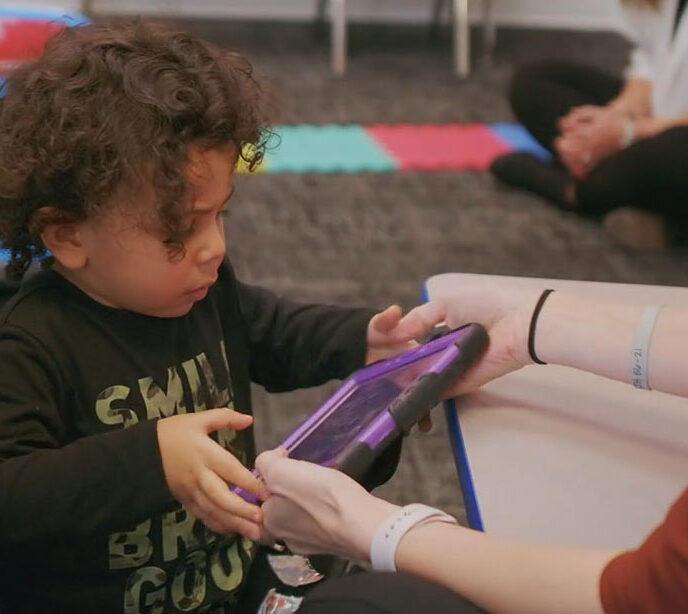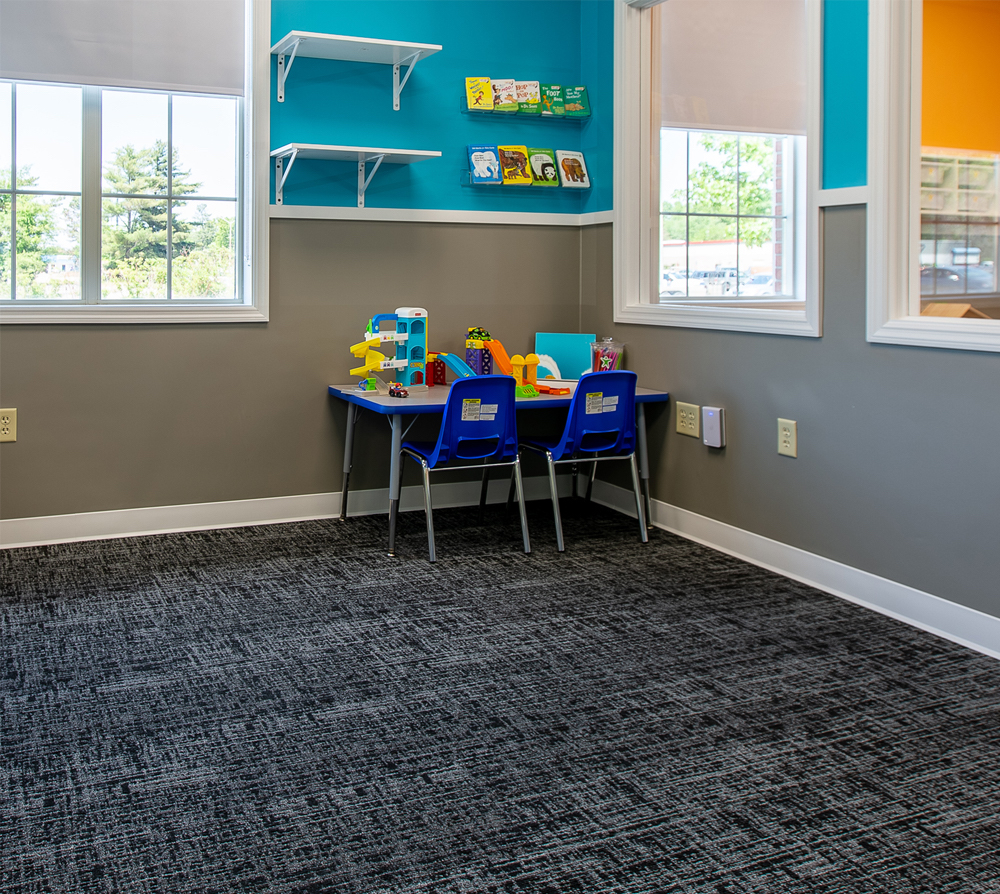Behavior Changes with Autism
Understanding and managing changes in behavior is essential for caregivers of autistic children. By identifying triggers and implementing effective strategies, such as ABA therapy and positive reinforcement, you can help autistic children learn to identify their triggers, self-regulate, and thrive.

Causes of Behavioral Changes in Autistic Children
It’s unreasonable to expect a child to be happy and well-behaved all the time. Every child needs to be given the freedom to feel, express, and understand their emotions; it’s a part of growing up. So, from time to time, outbursts or moments of disobedience are bound to happen. When you’re raising an autistic child, however, these instances tend to happen a lot more frequently.
Knowing what is causing these sudden changes in behavior and finding the best ways to manage them can make the at-home situation a lot more enjoyable for everyone involved. It can also give your child valuable coping skills to take out into the world.
This blog explores how you can identify your autistic child’s triggers, implement effective strategies to minimize them (such as ABA therapy and positive reinforcement), and how these measures can help your child learn how to spot their own triggers, self-regulate, and thrive in their daily life.
Examples of Challenging Behavior from Autistic Children
The reason autism is considered a spectrum disorder is that it encompasses a wide range of symptoms and behaviors that can vary greatly from one individual to another. Every autistic child is unique, and so are their behaviors, strengths, and challenges.
Challenging behaviors in autistic children often arise as a means of communication, coping mechanism, or response to environmental factors. So, it’s important to remember that these behaviors are not always intentional acts of defiance from your child but rather expressions of unmet needs or difficulties in communicating their feelings or processing the world around them.
Autistic children may exhibit a range of challenging behaviors that can vary in frequency and intensity. While the specific behaviors can differ from child to child, some common examples include:
- Tantrums and meltdowns: Intense emotional outbursts, often in response to sensory overload, changes in routine, or frustration due to communication difficulties.
- Stimming: Self-stimulatory behaviors, or stimming, are repetitive actions such as hand-flapping, rocking, or spinning that help autistic children self-soothe. These behaviors are usually harmless, but they can interfere with your child’s ability to engage with others or focus on specific tasks.
- Aggression: It’s not uncommon for autistic children to exhibit aggressive behaviors, such as hitting, biting, or scratching, as a way of expressing discomfort, frustration, or pain.
- Self-injury: If an autistic child is feeling overwhelmed or overstimulated and unable to communicate their needs effectively, it can result in them turning their aggression inward and engaging in harmful behaviors like head-banging, biting, or scratching themselves.
- Withdrawal: Social situations can be difficult for autistic children, so many of them have a tendency to withdraw from social interactions. They prefer to be alone, so they isolate or avoid eye contact and physical touch, making it challenging to build relationships and engage in social activities.
Understanding the link between autism and behavior issues and taking the time to identify what is triggering them in your child is the first step in developing strategies and techniques that can help you support and nurture them. Recognizing that these behavioral changes are often a form of communication — or rather frustration due to difficulty communicating — can help you approach them with empathy and patience.
What Are Some Causes of Behavioral Change in Autistic Children?
Autism Spectrum Disorder (ASD) is a neurological and developmental condition that affects how people communicate, interact with others, perceive themselves, and interpret the world around them. Autistic adults and children often experience heightened sensory sensitivities, process information differently, and approach social interactions more cognitively than intuitively.
For children with ASD, sudden behavior changes can be triggered by sensory overload, changes in their daily routine as well as certain medical conditions. By understanding what the potential triggers are, caregivers can effectively implement strategies to manage behavior and support their autistic child through challenging moments.
What Triggers Behavioral Changes in Autistic Children?
The behavior of autistic children can vary widely, as each child’s experience exists on the broad behavioral spectrum of autism. However, there are certain factors that can commonly trigger changes in behavior.
1. Sensory Issues
Sensory processing issues are common among most autistic children. They may be highly sensitive (hypersensitive) or under-responsive (hyposensitive) to light, sound, taste, touch, and smell.
For example, a child can become overwhelmed in a crowded, bright, and noisy environment, resulting in a meltdown or shutdown. Or, they may seek intense sensory experiences, like spinning or rocking, in order to self-regulate. These sensory differences can significantly affect their emotional state and how they behave.
2. Changes in Routine
Autistic children often thrive on predictability and routine. This means that they do best when they know what to expect day to day. Any changes, sometimes even minor ones, to their daily schedules or environment can be distressing and lead to behavioral changes.
3. Medical Conditions
Some autistic children may have specific underlying medical conditions that contribute to behavioral changes. For instance, gastrointestinal issues, allergies, or sleep disorders may cause discomfort and impact their behavior negatively.
4. Communication Difficulties
Communication difficulties can also be a great challenge for some autistic children. They may have difficulty understanding or using language. They could even struggle to focus and communicate effectively due to the sensory issues discussed above. Understandably, not being able to communicate can lead to frustration and result in challenging behaviors, such as self-injury, tantrums, and aggression.
5. Social Challenges
Social challenges can also be a source of stress and the cause of behavioral issues for autistic children, since they may have difficulty understanding subtle social cues, micro-expressions, and emotions, as well as any form of nonverbal communication. These challenges can be incredibly frustrating and isolating for the child.
In social settings, autistic children may engage in repetitive or self-stimulatory behaviors as a coping mechanism. They may also withdraw from social interaction altogether to avoid the complex and uncomfortable dance of human interaction.
Recognizing Triggers
Recognizing triggers is the key to effectively managing the behavioral health of autistic children. Caregivers should pay close attention and take note of any specific circumstances or events that precede unhealthy, inappropriate, or challenging behaviors.
Once the potential triggers have been identified, caregivers and parents can work on creating tailored strategies to minimize or avoid those behaviors and responses altogether, as well as teach new skills to support their child.
Effective Strategies for Managing Behavioral Changes
Dealing with sudden behavior changes in autistic children calls for a holistic approach, one that considers the context, unique needs, and challenges of that particular child.
As caregivers face inappropriate or challenging behaviors, having the right strategies becomes crucial when supporting the child’s development and well-being.
Positive Behavior Support
Positive Behavior Support, or PBS, is a systematic approach to managing behavior that focuses on reinforcing positive behaviors and teaching new skills. PBS can be highly effective in reducing challenging behaviors and improving the child’s ability to function effectively.
Visual Schedules
Visual schedules can help ground children in predictability by creating structure. This helps to reduce anxiety and prevent potential meltdowns. Creating a visual schedule can be as simple as a picture chart that shows the child what activities they will be doing throughout the day or more complex, such as a digital schedule that shows the child the time and location of each activity.
Sensory Breaks
Sensory breaks can provide autistic children with a healthy way to self-regulate and calm down when they’re feeling overwhelmed and overstimulated. Sensory breaks can include activities such as listening to music, doing breathing exercises, or simply sitting in a peaceful place. Sensory supports are often recommended following an Occupational Therapist’s evaluation.
Applied Behavior Analysis
Applied Behavior Analysis (ABA) therapy is a highly effective intervention for addressing skills deficits and socially impactful behaviors of people, including children with autism. It focuses on reinforcing positive behaviors and teaching new skills. ABA programs also incorporate aspects of PBS and parent training.
Caregiver and Parent Training
Training caregivers and parents of autistic children can be critical to managing behavioral changes and issues in these children because it can teach caregivers how to use the appropriate strategies to manage their child’s behavior. Importantly, it also provides much-needed support and resources to help guardians and caregivers cope with the complexities of raising an autistic child in a neurotypical world.
Managing Autism and Sudden Behavior Changes With the Lighthouse Autism Center
For parents and caregivers, sudden behavior changes in their autistic children can be distressing. However, by learning how to deal with autism and behavior challenges effectively, they can profoundly affect the well-being of their autistic child.
LAC’s innovative Lighthouse Fusion ABA Therapy, along with its extensive archive, offers valuable autism resources for parents and caregivers of autistic children. Armed with knowledge and tailored strategies, caregivers can create a nurturing and supportive environment that fosters growth and empowers their autistic child to thrive.
Together, we can unlock your child’s potential
Related News

10/07/2025
PECS and Its Use in ABA Therapy – Lighthouse Autism Center
The picture exchange communication system, or PECS, is a teaching system that can help an autistic child or another individual with speech difficulties improve their communication skills. We take a look at PECS’ role in ABA therapy and unpack how it works. What Is the PECS System and How Is It Used In ABA Therapy? […]

08/13/2025
ABA Therapy Tips for Taking Your Autistic Child to the Dentist
Taking Your Autistic Child to the Dentist For any child, and even adults, a trip to the dentist can often be filled with anxiety, fear, and discomfort. For a autistic child, especially, these feelings can be even further heightened by sensitivities to noise, smell, and touch. To make this experience better for both the child […]

08/13/2025
Tips for House Hunting with Your Child on the Spectrum
Guidance for Families with Children with Autism when Moving Moving is always a stressful and complicated endeavor. But when you have a child on the autism spectrum, the thought of packing up your household and moving somewhere new can seem like a near-impossible task. Parents often worry that their children will get overwhelmed by this […]


